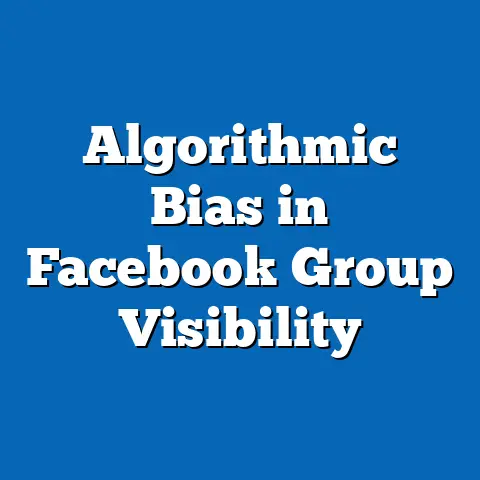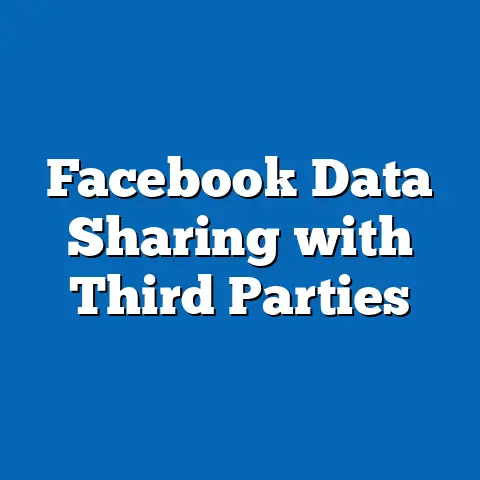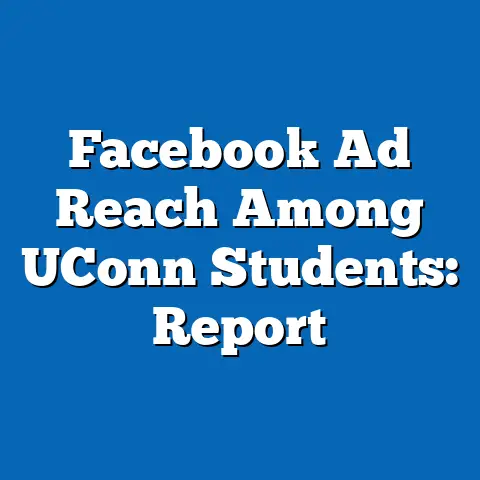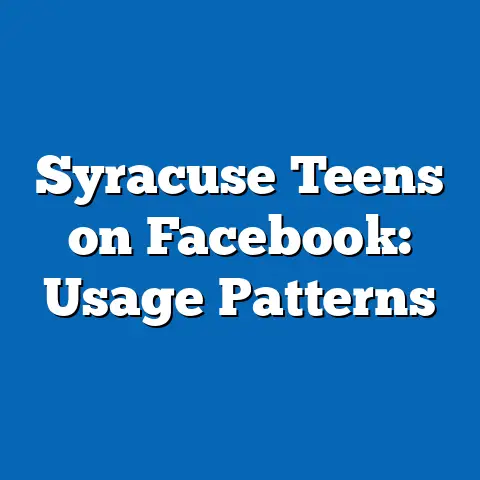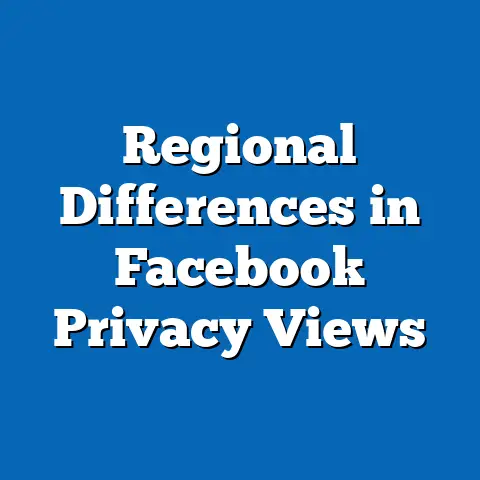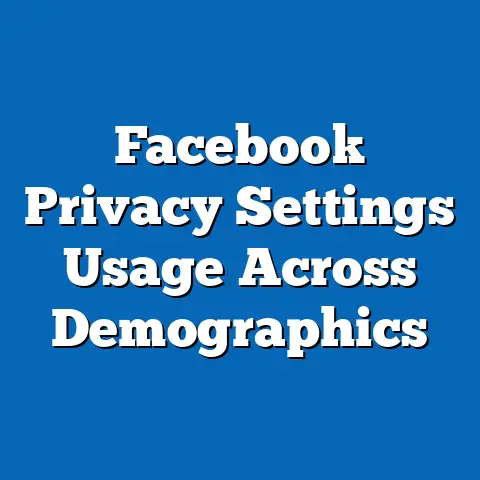Facebook Ad Revenue vs. Competitor Platforms
The digital advertising landscape in 2024 presents a formidable challenge for platforms like Facebook (now under Meta), as they navigate an increasingly competitive environment while maintaining their stronghold on ad revenue. Despite its historical dominance, Facebook faces mounting pressure from competitors such as Google, TikTok, and emerging platforms like Snapchat and Pinterest, each vying for a share of the global digital ad market, projected to reach $740.3 billion by 2024 according to eMarketer. This article begins by examining the demographic makeup, core beliefs, voting patterns, and distinguishing characteristics of Facebook’s user base compared to competitor platforms, as these factors directly influence ad revenue potential and market positioning.
Part 1: Understanding the User Base – Demographics and Political Characteristics
1.1 Demographic Composition of Facebook Users
Facebook’s user base remains one of the largest globally, with approximately 3.05 billion monthly active users (MAUs) as of Q3 2023, according to Meta’s investor reports. The platform’s demographic spread is notably broad, with significant penetration across age groups: 25-34-year-olds constitute the largest segment at 31.5% of users, followed by 18-24-year-olds at 23.1%, and 35-44-year-olds at 18.2%, per Statista 2023 data. Geographically, Asia-Pacific accounts for 42% of users, while North America and Europe represent 10% and 16%, respectively, highlighting a reliance on emerging markets for growth.
Gender distribution on Facebook is relatively balanced, with 56% male and 44% female users globally. Education levels vary, with a notable portion of users (approximately 40%) having some college education or higher, particularly in developed markets like the U.S., based on Pew Research Center findings from 2022. This diverse demographic makeup positions Facebook as a platform with wide-reaching ad potential but also challenges in tailoring content to niche audiences compared to competitors.
1.2 Core Beliefs and Values
Facebook users, due to their broad demographic spread, exhibit a wide range of beliefs and values, often reflecting regional and cultural differences. In the U.S., surveys by Pew Research (2023) indicate that 54% of Facebook users identify as politically moderate, while 25% lean liberal and 21% lean conservative. This contrasts with platforms like TikTok, where younger users (Gen Z) show a stronger liberal tilt (60% liberal-leaning per 2023 Pew data), or X (formerly Twitter), where users skew more polarized with 35% identifying as strongly liberal.
Facebook’s user base values connectivity and community engagement, often using the platform for family updates, local news, and group interactions. However, trust in the platform has waned due to privacy scandals, with only 27% of U.S. users expressing confidence in Facebook’s data handling practices, according to a 2023 Harris Poll. This trust deficit shapes ad engagement, as users may be more skeptical of targeted advertising compared to platforms perceived as more transparent.
1.3 Voting Patterns and Political Engagement
Facebook users in the U.S. have historically shown high political engagement, with 70% of adults reporting they encounter political content on the platform, per Pew Research 2022. Voting patterns among U.S. Facebook users largely mirror national trends, with a slight Democratic lean (52% voted for Biden in 2020 compared to 46% for Trump among active users, per exit polls analyzed by Edison Research). However, the platform’s role in political discourse has drawn scrutiny, as older users (45+) are more likely to share conservative-leaning content, while younger users engage with progressive causes.
Comparatively, TikTok users show lower voting participation (only 40% of eligible U.S. users voted in 2022 midterms per Pew data), reflecting their younger demographic. X users, on the other hand, demonstrate higher engagement with political news (65% use it as a primary news source), often aligning with urban, educated, and liberal-leaning voters. Facebook’s broad political spectrum makes it a battleground for diverse ad campaigns but risks alienating segments due to perceived bias or misinformation concerns.
1.4 Distinguishing Characteristics Compared to Other Groups
Unlike TikTok, which is heavily youth-driven (67% of U.S. users are under 30 per Statista 2023), or X, which caters to a niche of highly engaged, news-focused users (70% use it for real-time updates per Pew 2023), Facebook’s distinguishing feature is its cross-generational appeal. Its integration of Marketplace, Groups, and Events also sets it apart, fostering sustained user retention compared to Snapchat’s ephemeral content focus. However, Facebook lags in capturing the cultural zeitgeist among Gen Z, with only 32% of U.S. teens using it regularly compared to 71% on TikTok, per Piper Sandler’s 2023 teen survey.
This demographic diversity offers advertisers a broad reach but poses challenges in competing with platforms that dominate specific age cohorts or cultural trends. Facebook’s older user base (25-54) provides stability in ad revenue through higher purchasing power, yet its struggle to retain younger users threatens long-term growth against competitors like TikTok and Instagram (also under Meta but analyzed separately for ad revenue).
Part 2: Ad Revenue Performance in 2024 – Facebook vs. Competitors
2.1 Facebook’s Ad Revenue Dominance
Facebook continues to lead the digital advertising market in 2024, with projected ad revenue of $135.9 billion, representing a 10.5% year-over-year increase, according to eMarketer. This accounts for approximately 18.4% of the global digital ad market, driven by its massive user base and sophisticated ad targeting tools like Custom Audiences and Lookalike Audiences. In the U.S. alone, Facebook is expected to generate $45.2 billion in ad revenue, bolstered by small and medium-sized businesses (SMBs) that account for 60% of its ad spend, per Meta’s 2023 financial reports.
The platform’s revenue per user (ARPU) remains strong at $44.50 globally in Q3 2023, with North American ARPU at $58.77, reflecting higher ad monetization in developed markets. However, growth in ARPU has slowed in regions like Europe due to regulatory pressures such as the EU’s Digital Markets Act, which limits data collection practices. Despite these challenges, Facebook’s ad revenue outpaces most competitors due to its scale and diversified ad formats (e.g., Stories, Reels, and News Feed ads).
2.2 Competitor Analysis: Google, TikTok, and Others
Google remains Facebook’s primary rival, with projected 2024 ad revenue of $237.8 billion, capturing 32.2% of the global market per eMarketer. Google’s strength lies in search advertising (55% of its revenue), where intent-driven ads yield higher conversion rates compared to Facebook’s social discovery model. However, Google’s YouTube platform competes directly with Facebook in video ad spend, generating $31.5 billion in 2024, driven by a younger demographic (60% of users under 35).
TikTok, a rapidly growing contender, is expected to generate $18.5 billion in ad revenue in 2024, a 25% increase from 2023, fueled by its dominance among Gen Z and short-form video content. Its ARPU is lower at $11.20 globally, reflecting a younger, less monetizable audience, but its engagement metrics (average 95 minutes daily usage per user per Statista 2023) make it a formidable competitor for ad dollars. Snapchat and Pinterest, with projected revenues of $5.3 billion and $3.8 billion respectively, target niche demographics (teens and women aged 25-34), but lack Facebook’s scale.
2.3 Market Share Trends and Shifts
While Facebook maintains a strong market share, its dominance has slightly eroded from 19.6% in 2021 to 18.4% in 2024, as competitors like TikTok gain ground (from 1.5% to 2.5% in the same period). Google’s share remains stable at around 32%, benefiting from diversified revenue streams across search, display, and video. Emerging markets, where Facebook has historically thrived, are now seeing faster ad spend growth on TikTok, particularly in Asia-Pacific, where TikTok’s ad revenue grew by 35% year-over-year in 2023.
Regulatory challenges also impact market share dynamics. In the EU, where GDPR and other privacy laws restrict data usage, Facebook’s ad revenue growth is projected at only 7% for 2024, compared to TikTok’s 30% in the same region due to less scrutiny on newer platforms. These trends suggest that while Facebook remains a leader, its growth trajectory faces headwinds compared to more agile competitors.
Part 3: Strategic Approaches and User Engagement
3.1 Facebook’s Ad Strategy and Innovations
Facebook’s ad strategy in 2024 continues to focus on diversification of formats and AI-driven targeting. The introduction of Reels ads, mirroring TikTok’s short-form video success, has driven a 20% increase in video ad impressions year-over-year, per Meta’s Q3 2023 report. Additionally, investments in AI tools for ad optimization have improved click-through rates by 15% for SMBs, a critical revenue driver.
However, privacy changes like Apple’s App Tracking Transparency (ATT) framework have cost Facebook an estimated $12.8 billion in lost revenue since 2021, with ongoing impacts in 2024. To counter this, Meta is shifting toward first-party data solutions and contextual advertising, though these are less effective than previous tracking methods. This strategic pivot aims to retain advertiser trust but may slow revenue growth compared to less regulated competitors.
3.2 Competitor Strategies
Google leverages its search dominance and YouTube’s video content to offer advertisers a dual approach of intent and engagement, with innovations like Performance Max campaigns driving a 12% increase in ad efficiency in 2023. TikTok’s strategy hinges on viral content and influencer partnerships, with 60% of its ad revenue tied to creator-driven campaigns, per Business of Apps 2023 data. Snapchat and Pinterest focus on niche targeting, with Snapchat’s AR ads and Pinterest’s shoppable pins appealing to specific demographics.
TikTok’s rapid innovation cycle, including features like TikTok Shop, poses a direct threat to Facebook’s e-commerce ad revenue, which accounts for 25% of its total ad spend. Google’s stability and TikTok’s growth highlight contrasting approaches—scale versus agility—that challenge Facebook’s one-size-fits-all model.
3.3 User Engagement Metrics
User engagement is a critical driver of ad revenue, and Facebook averages 33 minutes of daily usage per user globally (Statista 2023), lower than TikTok’s 95 minutes but higher than X’s 30 minutes. Engagement among younger users is declining, with only 19% of U.S. teens considering Facebook a primary platform compared to 62% for TikTok. However, older users (35+) remain loyal, spending an average of 40 minutes daily, sustaining ad impressions.
High engagement on competitor platforms like TikTok translates to higher ad exposure, with users viewing an average of 8 ads per session compared to Facebook’s 5. This gap underscores the need for Facebook to enhance content relevance and retention strategies to maintain ad revenue growth.
Part 4: Intersections of Demographics and Ad Performance
4.1 Age and Generational Trends
Age significantly influences ad performance across platforms. On Facebook, users aged 25-54 contribute 65% of ad revenue due to higher disposable income and purchasing intent, per eMarketer 2023. Conversely, TikTok’s Gen Z audience drives lower per-user revenue but higher engagement, with 70% of users interacting with ads weekly compared to 55% on Facebook.
This generational divide shapes ad strategies, with Facebook focusing on life-event targeting (e.g., weddings, home purchases) for older users, while TikTok prioritizes trend-driven campaigns. Platforms like Snapchat, with 75% of users under 34, struggle to monetize at Facebook’s level but excel in brand awareness for youth-focused products.
4.2 Education, Income, and Race
Education and income levels also play a role in ad monetization. Facebook’s user base in the U.S. includes 45% with household incomes above $75,000, aligning with higher ad spend on premium products, per Pew 2022 data. Racial demographics show a diverse audience (60% White, 15% Hispanic, 12% Black in the U.S.), allowing for broad but sometimes less precise targeting compared to Pinterest, where 70% of users are White women aged 25-44.
TikTok’s user base is more racially diverse (40% White, 20% Hispanic, 15% Black), reflecting its appeal to younger, urban populations. These demographic intersections highlight why Facebook retains a broad advertiser base, while competitors carve out specialized markets.
4.3 Regional Variations
Regionally, North America and Europe remain Facebook’s highest ARPU markets, but growth is fastest in Asia-Pacific, where low-cost ads to large audiences drive volume over value. TikTok, however, is outpacing Facebook in Asia-Pacific ad growth (40% vs. 15% in 2023), leveraging cultural resonance and localized content. Google dominates across all regions due to search utility, with no direct regional weakness.
These variations suggest that while Facebook’s global reach is unmatched, regional competition and regulatory landscapes (e.g., India’s data localization laws) could fragment its revenue streams in 2024.
Part 5: Consensus and Division in Ad Ecosystems
5.1 Areas of Consensus
Across platforms, there is consensus on the importance of video content, with 80% of digital ad spend projected to include video formats in 2024, per IAB reports. Personalization and mobile-first strategies are also universal priorities, as 90% of users access social platforms via mobile devices. Facebook, TikTok, and Google align on leveraging AI for ad optimization, with each reporting double-digit efficiency gains from machine learning tools.
5.2 Areas of Division
Divisions emerge in target demographics and ad formats. Facebook and Google prioritize broad reach and ROI-driven campaigns, while TikTok and Snapchat focus on cultural relevance and engagement over immediate conversions. Regulatory scrutiny also divides platforms, with Facebook and Google facing greater antitrust and privacy challenges than newer entrants like TikTok, impacting innovation pace.
These divisions shape advertiser preferences, with SMBs favoring Facebook for cost-effective reach (average CPM of $11.20 vs. TikTok’s $15.50), while large brands invest in TikTok for trendsetting campaigns despite higher costs.
Part 6: Historical and Social Context
6.1 Historical Trends in Digital Advertising
Digital advertising has evolved from banner ads in the 1990s to today’s data-driven, interactive formats, with Facebook pioneering social advertising since its 2007 ad platform launch. Its revenue growth—from $1.9 billion in 2010 to $135.9 billion projected in 2024—reflects the shift toward social media as a primary ad channel. Competitors like Google (search-focused since 2000) and TikTok (viral content since 2016) have reshaped the landscape by targeting specific user behaviors.
6.2 Social Context and User Trust
Socially, privacy concerns and misinformation have eroded trust in platforms like Facebook, with 60% of U.S. users expressing concern over data usage per Gallup 2023. This contrasts with TikTok, where privacy concerns are high (55%) but less impactful on usage due to its entertainment focus. These social dynamics influence ad effectiveness, as trust correlates with ad receptivity, posing long-term risks for Facebook’s revenue model.
Conclusion: Navigating the Future of Digital Ad Revenue
Facebook’s ad revenue dominance in 2024, projected at $135.9 billion, underscores its unparalleled scale and targeting capabilities, driven by a diverse, cross-generational user base. However, competitors like Google ($237.8 billion) and TikTok ($18.5 billion) challenge its market share through specialized strengths—search intent and youth engagement, respectively. Demographic trends, regulatory pressures, and engagement metrics reveal both opportunities and vulnerabilities for Facebook, particularly in retaining younger users and navigating privacy constraints.
In the broader context, the digital ad market’s growth to $740.3 billion reflects a maturing industry where innovation, trust, and demographic alignment are critical. While Facebook remains a leader, its future success hinges on balancing broad appeal with targeted relevance, a challenge that competitors are increasingly poised to exploit. This analysis, grounded in data from eMarketer, Pew Research, and industry reports, highlights the complex interplay of user dynamics and market forces shaping the 2024 ad landscape.

